Mechanically adjustable variable resistor with three legs. It is used as a voltage divider. (It is not a meter at all, but got the name from its historical ancestor, which was a meter.)
A potentiometer, (also known as pot, control, volume control, volume knob, etc). It is a variable voltage divider (potential divider).

A potentiometer contains a wound resistance wire or a carbon film, and both terminals are connected with separate leads (end terminals or terminal legs). On this resistance wire, there is a slider (also called wiping contact, or variable contact, or jockey, etc). This slider is conductive, and connected to the (third) variable contact terminal (usually the central terminal or central leg).
Conceptually, potentiometers are different from rheostats, because rheostats (the basic-type of variable resistor) contains only two terminals (see: What's the difference between a potentiometer and a rheostat?).
Usually, when a rheostat is needed, a potentiometer is used as a rheostat by using only one of the terminal legs and the variable contact terminal.
Potentiometers can be of different types, such as sliding (linear, also called fader), rotary (commonly called volume control or volume knob; sometimes also contains an on/off switch), and preset potentiometers (also called trimmer potentiometers, or trimming potentiometers, or trimpots).
"Potentiometer" got its name from its historic ancestor, a measuring device working on the principle of wheatstone-bridge voltage divider (see: The potentiometer used in electronics is not a measuring instrument. Why it is contains phrase 'meter'?).